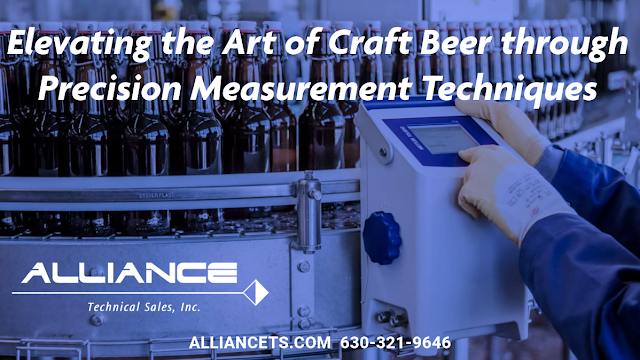Fully automated cleaning and calibration systems for process analytical sensors are designed to keep sensors operating at peak performance without manual intervention. Industries use these systems to ensure consistent, accurate measurements from sensors that monitor critical processes.
These systems typically use methods like chemical cleaning, ultrasonic vibration, or mechanical scrubbing to remove contaminants from sensor surfaces. They also include calibration routines to check sensor readings against known standards and adjust them as needed.
Companies implement these systems for several reasons:
- Reduced Human Involvement: They minimize the need for manual maintenance, freeing up personnel for other tasks and reducing the risk of human error.
- Increased Maintenance Frequency: Automated systems enable more frequent cleaning and calibration cycles than manual methods, improving sensor accuracy and reliability over time.
- Enhanced Safety: By reducing the need for workers to access hazardous areas where sensors are often located, these systems enhance safety.
- Regulatory Compliance: They provide consistent, documented maintenance procedures that help companies meet regulatory requirements and quality standards.
In continuous manufacturing processes, automated systems allow for sensor maintenance without interrupting production. This capability increases overall equipment effectiveness and reduces costly downtime. Additionally, the data collected by automated systems provide valuable insights into sensor performance trends and help predict when sensors might need replacement.
Mettler Toledo's EasyClean 500(X)
The
EasyClean 500(X) is a compact, versatile system designed to automate routine maintenance for process analytical sensors. Utilizing Intelligent Sensor Management (ISM™) predictive diagnostics, this device optimizes the cleaning and calibration of pH, ORP, and oxygen sensors without human intervention.
The EasyClean 500(X) ensures reliable measurements by automatically executing maintenance routines based on real-time sensor performance data. It analyzes sensor readings and predictive diagnostics to determine when cleaning or calibration is necessary, maximizing sensor lifespan and measurement accuracy while minimizing unnecessary maintenance cycles.
Customization and Control
Users can extensively customize the EasyClean 500(X) to suit their specific applications. The system offers multiple control options, allowing integration with existing process control systems or standalone operation. Operators can configure cleaning schedules, calibration intervals, and alarm thresholds to match their process requirements and regulatory standards.
Versatile Cleaning and Calibration
The device supports various cleaning methods, including chemical, ultrasonic, and air-scouring techniques. This flexibility enables effective maintenance across a wide range of industrial environments and contaminant types. For calibration, the EasyClean 500(X) can manage multiple buffer solutions and calibration standards, ensuring sensors remain accurately calibrated for diverse measurement ranges.
Robust and Compact Design
Engineered to withstand harsh industrial conditions, the EasyClean 500(X) features a compact design for installation in space-constrained areas and robust construction for reliable operation in challenging environments.
Cost Reduction and Efficiency
By automating sensor maintenance, the EasyClean 500(X) improves measurement reliability and reduces operating costs. It minimizes manual intervention, decreases reagent consumption through optimized cleaning cycles, and extends sensor lifetimes through timely, appropriate maintenance.
User-Friendly Interface and Advanced Features
The EasyClean 500(X) includes a user-friendly interface with a color touchscreen display, allowing operators to easily monitor system status, adjust settings, and view maintenance history. It can store multiple sensor calibration and cleaning protocols, enabling quick changeovers for different process streams or product batches.
Compatibility and Predictive Maintenance
Designed with compatibility in mind, the EasyClean 500(X) can interface with a wide range of Mettler Toledo ISM sensors, including those for pH, dissolved oxygen, and oxidation-reduction potential (ORP) measurements. Its predictive maintenance capabilities use advanced algorithms to analyze sensor performance trends, predicting when a sensor might fail or drift out of specification, allowing proactive replacement before disruptions occur.
Flexible Mounting and Safety Features
The EasyClean 500(X) offers multiple mounting options, including direct installation on a tank, nearby wall, or stand-alone frame, integrating seamlessly into existing plant layouts. Safety features include leak detection and automated shutdown procedures to prevent chemical spills. The system manages and documents the use of cleaning and calibration solutions, helping facilities meet environmental regulations and minimize waste.
Connectivity and Easy Maintenance
The EasyClean 500(X) supports various industrial communication protocols, including Modbus, PROFIBUS, and FOUNDATION Fieldbus, enabling seamless integration with distributed control systems (DCS) and supervisory control and data acquisition (SCADA) systems. Mettler Toledo has designed the system for easy maintenance with a modular construction that allows quick replacement of components, minimizing downtime during servicing. Remote diagnostic capabilities enable technical support for troubleshooting and optimization.
In summary, the EasyClean 500(X) is a highly adaptable and efficient system that automates sensor maintenance, enhances measurement accuracy, and reduces operational costs, making it an invaluable tool for various industries.






